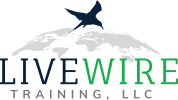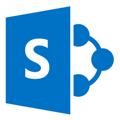Microsoft Courses

LiveWire Training offers both beginner and advanced courses in Microsoft Office software.
- The Basics
- Working with Tables and Records
- Working with Forms
- Working with Reports
- Working with Queries
- Managing Your Database and Access Interface
Available Microsoft Courses
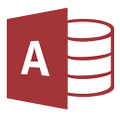
Access
LiveWire Training offers both beginner and advanced courses in
Example Course Description
Microsoft Access 2016 Level 1
This two day introductory level Access class is ideal for students interested in a strong start in Access. In this class you will learn the both how to use an existing Access database, and the fundamental steps in creating a new database or editing a database you already have.
Like all LiveWire Training classes, Access Level 1 is fully customizable, and organizations may reduce this class to just one day, half a day, or even hourly classes by eliminating chapters at no extra charge. Speak with your LiveWire professional for guidance.
- An introduction to the Access interface
- The basics of creating a database with tables, forms, queries, and reports
- Table management tools, including data normalization and the Relationships window
- Techniques for importing and exporting data with Access
Lesson 1: Getting Started with Access
Microsoft Access 2016
Access Files
Opening Databases
Access Web Apps
The Access 2016 Application Window
Tables
Forms and Views
Queries
Reports
The Ribbon Interface
Activity 1-1
Database Templates
Web App Templates
Save Options
Field Definition
Methods to Create a Form
Form Object Views
Form Sections
Modifying Existing Forms
Saving Forms
Deleting Forms
Access Web App Views
Activity 1-2
Using Tell Me
Accessing Advanced Help Options
Activity 1-3
Summary
Review Questions
Lesson 2: Working with Table Data
AutoCorrect
Commit, Save, and Undo
Quick Search
The Find and Replace Dialog Box
Datasheet Totals
Activity 2-1
Adding New Records
Updating Records with a Query
Append Queries
Navigating Through Records
Printing Records
Activity 2-2
The Sort Feature
The Filter Feature
Filter Commands
The Group Feature
Activity 2-3
Lookup Fields
The Property Sheet Pane
Activity 2-4
Summary
Review Questions
Lesson 3: Querying a Database
Query Views
The Simple Query Wizard
Types of Queries
The Run Command
Query Design
Saving Queries
Deleting Queries
Renaming Queries
Activity 3-1
Query Criteria
Comparison Operators
Logical Operators
Sorting Query Results
Grouping Query Results
Formatting Query Fields
The Zoom Dialog Box
Activity 3-2
Arithmetic Operators
Adding Calculated Fields
Adding Conditional Logic
Activity 3-3
Summary
Review Questions
Lesson 4: Creating Advanced Queries
Parameter Queries
Wildcards in a Parameter Query
The Ampersand Operator
Activity 4-1
Action Queries
Types of Action Queries
Activity 4-2
The Find Duplicates Query Wizard
The Find Unmatched Query Wizard
Activity 4-3
Crosstab Queries
Multiple Table Queries
Activity 4-4
Summary
Review Questions
Lesson 5: Generating Reports
Report Creation Tools
Using Application Parts to Create Reports
Report Views
The Report Wizard
Saving a Report
Modifying an Existing Report
Deleting a Report
Activity 5-1
Report Sections
Adding Controls
Modifying Control Properties
Managing Labels
Inserting Images
Activity 5-2
Galleries
Themes
Activity 5-3
Adding a Header or Footer
Inserting Page Numbers
Page Setup Options
The Print Preview Tab
Activity 5-4
Summary
Review Questions
Lesson 6: Customizing the Access Environment
Access Options
Activity 6-1
Summary
Review Questions
Lesson 7: Designing a Relational Database
Relational Databases
The Relational Database Design Process
The Statement of Purpose
Existing Data
Guidelines for Determining Fields
Business Rules
Guidelines for Grouping Fields into Tables
Primary Keys
Foreign Keys
Composite Keys
Table Relationships
Activity 7-1
Table Creation Options
Importing Tables from Other Databases
Creating Tables with Templates
Table Views
Data Types
Inserting Fields
Quick Start Fields
Deleting Fields
Calendar for Picking Dates
The Lookup Wizard
The Table Properties Dialog Box
Activity 7-2
Renaming a Table
Changing Field Captions
Changing Field Sizes
Configuring Fields to Auto-Increment
Setting the Default Value for a Field
Activity 7-3
The Relationships Window
Referential Integrity
Guidelines for Enforcing Referential Integrity
The Edit Relationships Dialog Box
Join Lines
Relationship Report
Activity 7-4
Summary
Review Questions
Lesson 8: Joining Tables
Query Joins
Inner Joins
Outer Joins
The Join Properties Dialog Box
Activity 8-1
Joining Tables with No Common Fields
Activity 8-2
Self-Joins
The Alias Property
Activity 8-3
Subdatasheets
Activity 8-4
Subqueries
Activity 8-5
Summary
Review Questions
Lesson 9: Organizing a Database for Efficiency
First Normal Form
Second Normal Form
Third Normal Form
Denormalization
The Table Analyzer Wizard
Activity 9-1
Many-to-Many Relationships
Junction Tables
Activity 9-2
Summary
Review Questions
Lesson 10: Sharing Data Across Applications
Data Importing
The Get External Data Wizard
Delimiters
Activity 10-1
Data Exporting
Activity 10-2
Exporting Access Data to Excel
Activity 10-3
The Microsoft Word Mail Merge Wizard
Merge Fields
The Mail Merge Task Pane
Activity 10-4
Summary
Review Questions
Lesson 11: Advanced Reporting
Report Design Elements
Report Design Tools
The Group, Sort, and Total Pane
The Field List Pane
Adding a Background Image to a Report
Activity 11-1
Report Format Tools
Report Control Properties
Report Pagination
Activity 11-2
Data Bars
Charts
Activity 11-3
Calculated Fields
Activity 11-4
Sub reports
Activity 11-5
Summary
Review Questions
Lesson 12: Additional Reporting Options
The Label Wizard
Activity 12-1
Publishing a Report as PDF
Activity 12-2
Summary
Review Questions
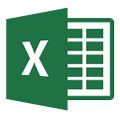
Excel
Spreadsheet Essentials
This three hour course is designed to introduce new users, and enhance the confidence of beginners on the essential topics of using spreadsheet applications. The course teaches proper terminology as well as hands on exercises needed to build and maintain a basic, yet highly functional spreadsheet.
Getting Started Basics
- Consolidating Information
- Removing Duplicates
- Configuring Data Validation
- Transposing Data
- Converting Text to Columns
- Creating a New Workbook
- Parts of a Workbook
- Saving a Workbook
- Opening a Workbook
- Your First Workbook
- Selecting Data
- Entering and Deleting Data
- Using Undo and Redo
- Using Cut, Copy, and Paste
- Using Spell Check
Printing
- Viewing, Printing, and Sharing Your Workbook
- Using Views
- Printing a Workbook
Formatting Text, Worksheets, And Data
- Changing the Font Face, Size, and Color
- Applying Text Effects
- Applying Borders and Fill
- Clearing Formatting
- Wrapping Text
- Changing the Size of Rows and Columns
- Adjusting Cell Alignment
- Changing Number Format
Working With Formulas
- Understanding Cell References and Formulas
- Using Basic Formulas
- Using Basic Functions
Analyzing and Managing Data in Excel
This three hour course, introduces many of the data management tools available in today’s spreadsheet applications. These tools aid the user in taking control of data across multiple files, build clear and simple reports, and consider various “what if” situations when analyzing data.
Managing Data
- Consolidating Information
- Removing Duplicates
- Configuring Data Validation
- Transposing Data
- Converting Text to Columns
Outlining and Grouping Data
- Outlining Data
- Showing and Hiding Outline Details
- Grouping Data
- Creating Subtotals
- Removing Outlining and Grouping
Working With Scenarios
- Creating Scenarios
- Loading Scenarios
- Merging Scenarios
- Editing Scenarios
- Creating a Scenario Summary Report
- Deleting Scenarios
Using Solver
- Setting up the Worksheet
- Running Solver
- Generating Reports and Scenarios with Solver
- Modifying Constraints
- Setting Solver Options
Analyzing Data
- Enabling the Analysis ToolPak
- Using Data Analysis Tools
- Using Goal Seek
- Using Data Tables
Charting Data and Working with Graphics
In this three hour course, the user will learn the power of presenting data in chart and graphical displays. Conventional and non-conventional charting techniques are presented as well as standard formatting methods used across multiple applications.
Inserting Art and Objects
- Inserting SmartArt
- Inserting Text Boxes
- Inserting Pictures
- Inserting Equations
- Drawing Shapes
Using PowerPivot
- Enabling PowerPivot
- Importing Access Data
- Importing Excel Data
- Integrating Data with Relationships
- Creating a PivotTable with PowerPivot Data
Advanced PivotTable Features
- Creating a Basic PivotTable
- Creating a Basic PivotChart
- Using the PivotTable Fields Pane
- Adding Calculated Fields
- Sorting Pivoted Data
- Filtering Pivoted Data
Charting Data
- Creating Sparklines
- Inserting Charts
- Inserting PivotTables
- Inserting PivotCharts
- Using Slicers
- Creating Timelines
Workbook Automation
In this three hour course, the user will discover techniques for saving time with simple, but often hidden tips and tricks. Macros for the “non-programmer” will teach the user how to automate time consuming or mundane tasks. Also included is a short example of editing macros using the Visual Basic Editor.
Using Timesaving Tools
- Using AutoFill
- Using Flash Fill
- Using AutoSum
- Using AutoComplete
- Using AutoCalculate
Customizing the Interface
- Changing Ribbon Display Options
- Customizing the Quick Access Toolbar
- Hiding and Showing Ribbon Tabs
- Creating Custom Ribbon Tabs
- Resetting Interface Changes
Working With Macros
- Using Macros
- Recording a Macro
- Writing a Macro using the Visual Basic Editor
- Editing a Macro
- Running a Macro
- Review Questions
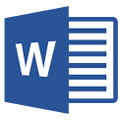
Word
Word Processing Essentials
This three hour course teaches the essential features every Microsoft Word user should know. After an overview of the working environment, students will learn how to format text and paragraphs, run spell check, insert page numbers, headers, and footers, and export documents to the printer, email, or online.
Getting Started
- Getting Started
- Signing In
- Saving a Document
- Opening a Document
- Creating a New Document
Viewing Your Document
- Using Views
- Using Zoom
- Using the Navigation Pane
- Viewing Documents Side-by-Side
The Finishing Touches
- Checking Spelling
- Inserting Page Numbers
- Adding Headers and Footers
Formatting Text Basics
- Changing the Font Face
- Changing the Font Size
- Changing the Font Color
- Applying Basic Text Effects
- Applying Advanced Text Effects
- Working with the Font Dialog
Your First Document
- Typing and Deleting Text
- Selecting Text
- Using Cut, Copy, and Paste
- Using Undo and Redo
- Searching a Document
- Using Find and Replace
Exporting and Sharing Your Document
- Saving a Document as PDF or XPS
- Editing PDF Documents
- Printing a Document
- E-Mailing a Document
- Sharing Your Document on SkyDrive
Formatting Paragraphs
- Moving Text
- Applying Bullets and Numbers
- Changing Line Spacing
- Aligning and Justifying Text
- Working with the Paragraph Dialog
Formatting Text Using Styles and Themes
- Applying Styles
- Changing the Theme
- Changing Document Formatting
- Choosing a New Color, Font, or Effects Scheme
- Using the Format Painter
- Clearing Formatting
Using Automating Techniques in Word Processing
This three hour course teaching various techniques to use automation to create, modify, or format documents. Methods include the use of building blocks, macros, templates, mail merge, and fill in forms. These methods can make the routine creation of documents quicker, easier, and more accurate
Using Building Blocks and Quick Parts
- Inserting Quick Parts
- Using the Building Blocks Organizer
- Saving Quick Parts
Creating XML Forms
- Creating a Form
- Inserting Controls
- Modifying Control Properties
- Grouping Controls
- Protecting a Form
- Distributing a Form
Performing a Mail Merge
- Starting the Wizard
- Choosing a Document
- Selecting a Starting Document
- Selecting Recipients
- Creating Your Document
- Previewing Your Document
- Completing the Merge
Advanced Macro Tasks
- Copying a Macro from a Template
- Assigning a Macro to a Keystroke
- Assigning a Macro to the Quick Access Toolbar
- About Macro Names
Using Macros
- Recording a Macro
- Writing a Macro using the Visual Basic Editor
- Editing a Macro
- Running a Macro
Creating Templates
- Creating a Template
- Saving a Template
- Using a Template
- Editing a Template
- Attaching a Template to a Document
Customizing the Interface
- Changing Ribbon Display Options
- Customizing the Quick Access Toolbar
- Hiding and Showing Ribbon Tabs
- Creating Custom Ribbon Tabs
- Resetting Interface Changes
Creating Long Documents
This three hour course teaches techniques for creating long documents. Topics include both technical methods as well as best practices for using sections, styles, columns, tables of contents, and indexes.
Working with Sections
- Inserting Section Breaks
- Customizing Page Setup for Each Section
- Navigating Through Sections
- Deleting Sections
Creating an Index
- Marking Index Entries
- Inserting an Index
- Updating an Index
- Customizing the Index with Styles
- Removing an Index
Creating a Table of Contents
- Marking Headings
- Inserting a Pre-Built Table of Contents
- Inserting a Custom Table of Contents
- Updating a Table of Contents
- Removing a Table of Contents
Doing More with Styles
- Creating Styles from Existing Text
- Creating Styles Using the Task Pane
- Modifying the Quick Style Gallery
- Using the Style Inspector
- Managing Styles
Working with Styles
- Creating Styles
- Applying Styles to Text
- Modifying Styles
- Deleting Styles
- Saving Style Sets
Formatting the Page
- Inserting a Cover Page
- Formatting Text as Columns
- Adding Watermarks
- Changing the Page Color
- Adding a Page Border
Changing Your Styles
- Changing Your Style Set
- Changing Your Color Scheme
- Changing Your Font Scheme
- Making Changes Permanent
Working With Graphics In Documents
This three hour course teaches Microsoft Word users how to work with the many graphic features available. Students will insert or create tables, charts, SmartArt graphics, equations, pictures, and videos. Many of the techniques discussed in this course will carry over to other Microsoft applications such as PowerPoint and Excel.
Inserting Art and Objects, Part One
- Inserting Tables
- Inserting Charts
- Inserting SmartArt
- Inserting Equations
- Inserting Screenshots
Working with Equations
- Inserting Built-In Equations
- Modifying Equations
- Creating a Custom Equation
- Saving an Equation to the Gallery
Working with SmartArt
- Adding SmartArt
- Adding Text
- Adding Photos
- Moving and Resizing SmartArt
- Deleting SmartArt
Inserting Art and Objects, Part Two
- Inserting Local Pictures
- Inserting Online Pictures
- Inserting Videos
- Drawing Shapes
- Inserting Text Boxes
Working with References, Bibliographies, Master and Subdocuments, and Outlines
This three hour course teaches users of Microsoft Word how to manage longer documents. Techniques in creating reference links, bibliographies, master and subdocuments, and outlines are included. An additional chapter on blogging is available as an Appendix.
Creating References in a Document
- Inserting Footnotes and Endnotes
- Inserting Captions
- Inserting Bookmarks
- Creating Cross-References
Creating a Bibliography
- Inserting Citations
- Managing Sources
- Choosing a Style
- Inserting a Bibliography
- Updating a Bibliography
Creating References to Other Documents
- Linking to Another Document
- Creating and Working with a Master Document
- Creating and Working with Subdocuments
- Managing Subdocuments
Creating Outlines
- Using Outline View
- Creating an Outline
- Expanding and Collapsing Headings
- Promoting and Demoting Headings
- Moving Headings
Embedding Objects in a Word Document
- Adding Text from a File
- Creating a New Object
- Creating an Object from a File
- Linking Objects to a Word Document
Appendix: Blogging with Word
- Creating a Blog Post
- Using Blogging Tools
- Configuring a Blog Account
- Publishing a Blog Post
Reviewing and Editing Documents
This three hour course is designed with the document editor in mind. Techniques discussed include tracking changes as documents are reviewed and edited, adding and navigating through comments, working with multiple versions, comparing and combining documents, and recovering unsaved files.
Reviewing Documents
- Tracking Changes
- Navigating Through Tracked Changes
- Accepting and Rejecting Changes
- Showing and Hiding Markup
Working with Multiple Documents
- Working with Versions
- Comparing Documents
- Combining Documents
- Recovering Unsaved Files
- Restricting Editing
- Password Protecting Documents
Commenting Documents
- Inserting Comments
- Editing and Replying to Comments
- Deleting Comments
- Navigating Through Comments
- Showing and Hiding Comments
Configuring Reviewer Settings
- Changing Your User Name and Initials
- Modifying Track Changes Options
- Locking Track Changes On
- Using the Reviewing Pane

Outlook
LiveWire Training offers both beginner and advanced courses in
Example Course Description
Example Agenda Title
- Getting Started
- Getting Organized
- Working with the Calendar
- Managing Junk Mail
- Sharing Your Calendar
- Scheduling Meetings with Microsoft
- Exchange Server
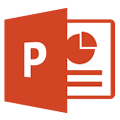
PowerPoint
LiveWire Training offers both beginner and advanced courses in
Example Course Description
Example Agenda Title
- Getting Started
- Formatting and Working with Text
- Formatting the Presentation
- Inserting Art and Objects
- Transitions and Animations
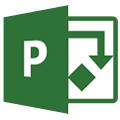
Project
LiveWire Training offers both beginner and advanced courses in
Example Course Description
Example Agenda Title
- Sed ut perspiciatis unde omnis iste nat errorae sit voluptatem acusa estum doloremque nor laudantium, tom rem. Consect edipi au lorem orestem.
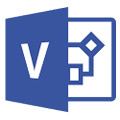
Visio
LiveWire Training offers both beginner and advanced courses in
Example Course Description
Example Agenda Title
- Sed ut perspiciatis unde omnis iste nat errorae sit voluptatem acusa estum doloremque nor laudantium, tom rem. Consect edipi au lorem orestem.

Windows User
LiveWire Training offers both beginner and advanced courses in
Example Course Description
Example Agenda Title
- Sed ut perspiciatis unde omnis iste nat errorae sit voluptatem acusa estum doloremque nor laudantium, tom rem. Consect edipi au lorem orestem.
